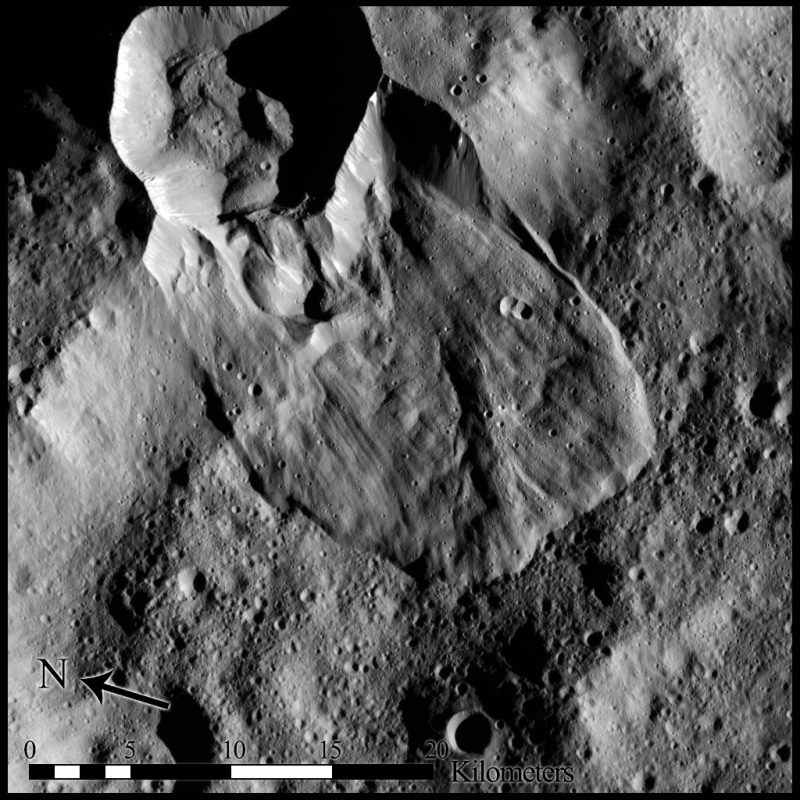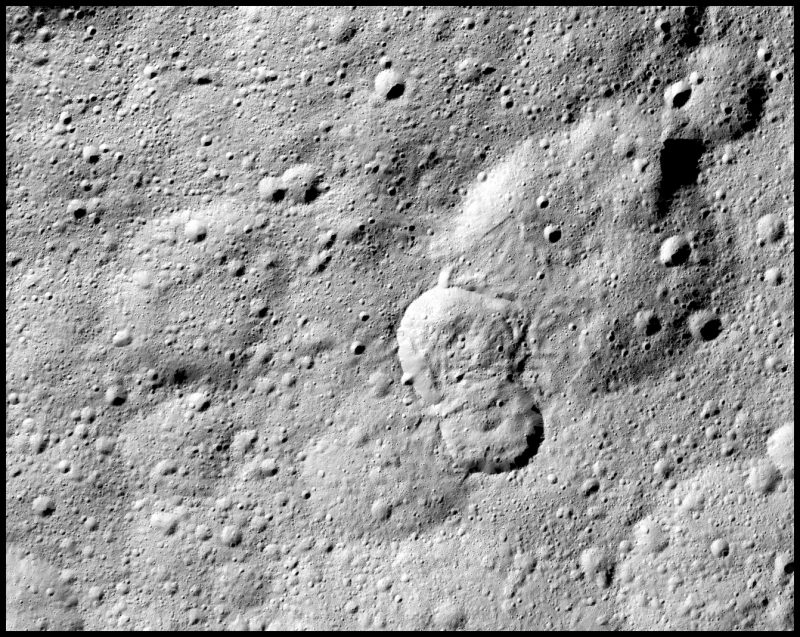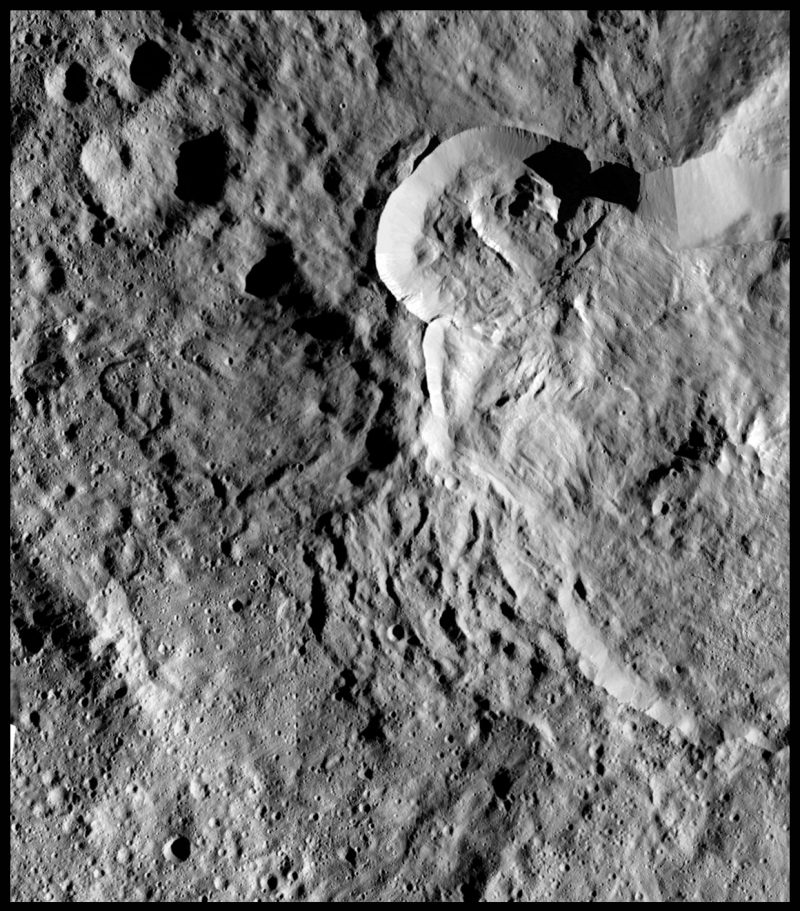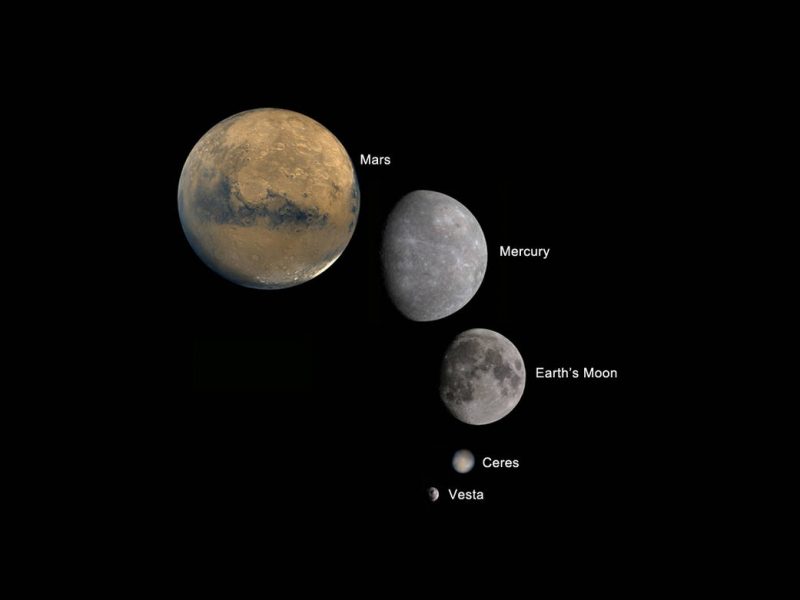
Ceres was once labeled as an asteroid, until being re-classified as a dwarf planet by the International Astronomical Union in 2006. It’s largest body orbiting our sun in the asteroid belt between Mars and Jupiter. Where we once saw Ceres only as a point of light (the word asteroid means starlike), we now see it as a little world. That’s thanks to the Dawn spacecraft, which has been orbiting Ceres since 2015. A new study based on Dawn data – published April 17, 2017 in the peer-reviewed journal Nature Geoscience – provides images and insights on landslides on this world. Study authors say their work provides yet more evidence that Ceres has a significant amount of water ice. They’ve also identified three types of Ceres landslides, described in the three landslide picture captions on this page.
Britney Schmidt of the Georgia Institute of Technology in Atlanta led the new study. She said in a statement:
Images from Dawn show that landslides, many of which are similar to those seen on Earth, are very common on Ceres, and further the case that Ceres has a lot of water ice involved in its structure …
The locations of these different types of features reinforces the idea that the shallow subsurface of Ceres is a mixture of ice and rock, and that ice is most plentiful near the surface at the poles.

Scientists expressed surprise at just how many landslides have occurred on Ceres in general. About 20 to 30 percent of craters greater than 6 miles (10 km) wide have some type of landslide associated with them. NASA said:
Such widespread ground ice features, which formed from of a mixture of rock and ice, had only been observed before on Earth and Mars.
Based on the shape and distribution of landslides on Ceres, study authors estimate that the ice in the upper few tens of meters of Ceres may range from 10 percent to 50 percent by volume. Carol Raymond, who is deputy principal investigator for the Dawn mission, commented:
These kinds of flows are not seen on bodies such as Vesta [now the largest asteroid, since Ceres was promoted to dwarf planet status], which Dawn studied from 2011 to 2012, because [Vesta’s] regolith is devoid of water.

So Dawn has shown us that, although Ceres and Vesta both orbit in the same approximate realm of our solar system, they’re very different worlds. The Dawn spacecraft is the only earthly spacecraft ever to orbit two destinations beyond Earth, by the way. It has accomplished its primary missions at both Vesta and Ceres, and it’s still orbiting Ceres, now in an extended mission phase.
Recently, the craft has been using its onboard ion engine to swivel the plane of its orbit around Ceres. It’s getting ready to look at Ceres from a new orbit and orientation. It’s also interesting to note that – around now, late April 2017 – the spacecraft is directly between the sun and the mysterious Occator Crater, home of the most famous of the Ceres bright spots. In this geometry, Dawn might be able to deliver new insights about the bright spots. The most famous ones, in Occator Crater, recently acquired their own names.

Since going into orbit around Ceres in March, 2015, Dawn has learned that Ceres has many bright spots. They’re now thought to be salt deposits, possibly left behind as ice vaporised from Ceres surface by sublimation – a process often seen in icy comets.
In fact, what Dawn has learned about Ceres helps blur the line between asteroids and comets. For example, Comet 67P/Churyumov–Gerasimenko – which has recently been scrutinized by the Rosetta spacecraft – also has landslides.

Bottom line: Landslides appear to be common on dwarf planet Ceres. A recent study of Ceres’ landslides reinforces the idea that Ceres has a significant amount of water ice.











